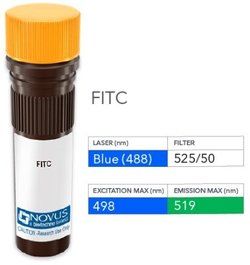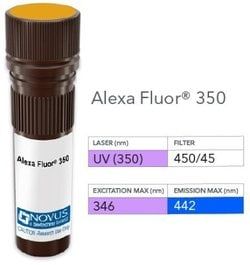HLA DQ/DR/DP Antibody (CR3/43), DyLight 594, Novus Biologicals™
Manufacturer: Novus Biologicals
Select a Size
| Pack Size | SKU | Availability | Price |
|---|---|---|---|
| Each of 1 | NB008314-Each-of-1 | In Stock | ₹ 56,426.00 |
NB008314 - Each of 1
In Stock
Quantity
1
Base Price: ₹ 56,426.00
GST (18%): ₹ 10,156.68
Total Price: ₹ 66,582.68
Antigen
HLA DPB1
Classification
Monoclonal
Conjugate
DyLight 594
Formulation
50mM Sodium Borate with 0.05% Sodium Azide
Gene Symbols
HLA-DPB1
Immunogen
Cells from human tonsil
Quantity
0.1 mL
Research Discipline
Asthma, Diabetes Research, Immunology
Test Specificity
Reacts with a common epitope of human major histocompatibility (MHC) class II antigens, HLA-DP, -DQ and -DR. Human MHC class II antigens are transmembrane glycoproteins composed of an chain (36kDa) and a chain (27kDa). They are expressed primarily on antigen presenting cells such as B lymphocytes, monocytes, macrophages, and thymic epithelial cells and are also present on activated T lymphocytes. Human MHC class II genes are located in the HLA-D region that encodes at least six and ten chain genes. Three loci, DR, DQ and DP, encode the major expressed products of the human class II region. The human MHC class II molecules bind intracellularly processed peptides and present them to T-helper cells. They, therefore, have a critical role in the initiation of the immune response. It has been shown that some autoimmune diseases are associated with certain class II alleles.
Content And Storage
Store at 4°C in the dark.
Applications
Western Blot, Flow Cytometry, Immunohistochemistry, Immunocytochemistry, Immunofluorescence, Immunohistochemistry (Paraffin)
Clone
CR3/43
Dilution
Western Blot, Flow Cytometry, Immunohistochemistry, Immunocytochemistry/Immunofluorescence, Immunohistochemistry-Paraffin
Gene Alias
DP beta 1 chain, DPB1, HLA class II histocompatibility antigen, DP(W4) beta chain, HLA DP14-beta chain, HLA-DP histocompatibility type, beta-1 subunit, HLA-DP1B, HLA-DPB, major histocompatibility complex class II HLA DPB1 protein, major histocompatibility complex, class II, DP beta 1, MHC class II antigen beta chain, MHC class II antigen DP beta 1 chain, MHC class II antigen DPB1, MHC class II antigen DPbeta1, MHC class II HLA-DP-beta, MHC HLA DPB1
Host Species
Mouse
Purification Method
Protein A or G purified
Regulatory Status
RUO
Primary or Secondary
Primary
Target Species
Human
Isotype
IgG1 κ
Related Products
Description
- HLA DPB1 Monoclonal specifically detects HLA DPB1 in Human samples
- It is validated for Western Blot, Flow Cytometry, ELISA, Immunohistochemistry, Immunocytochemistry/Immunofluorescence, Immunohistochemistry-Paraffin.




